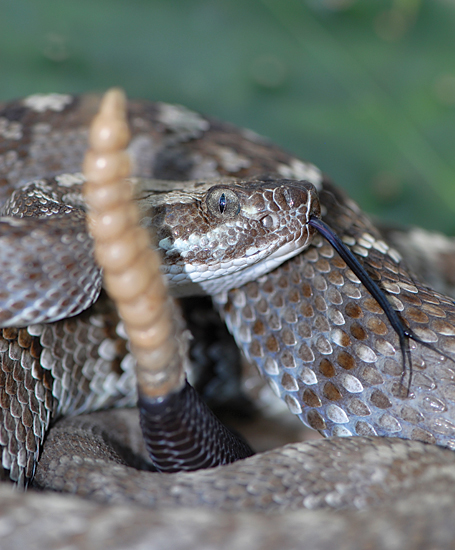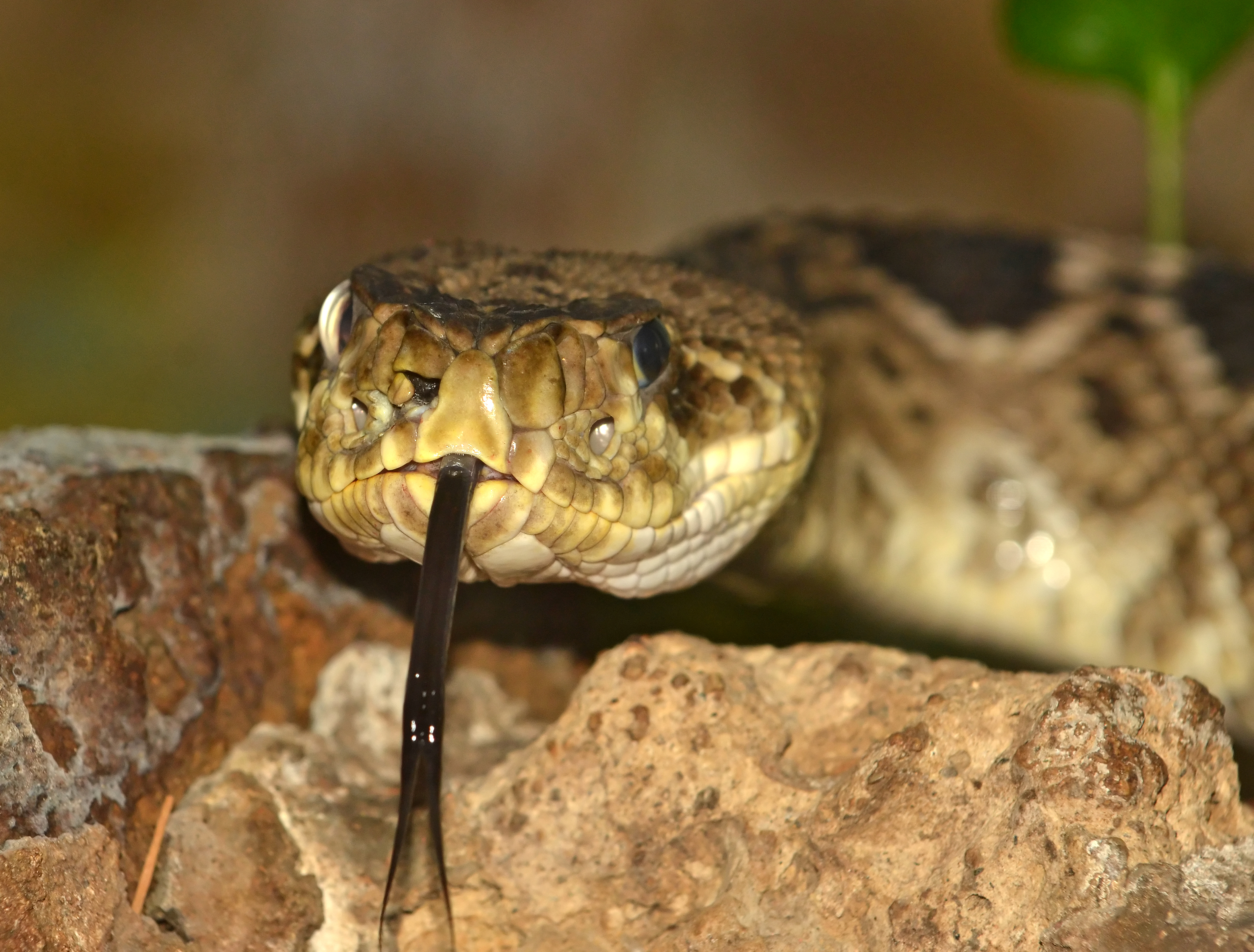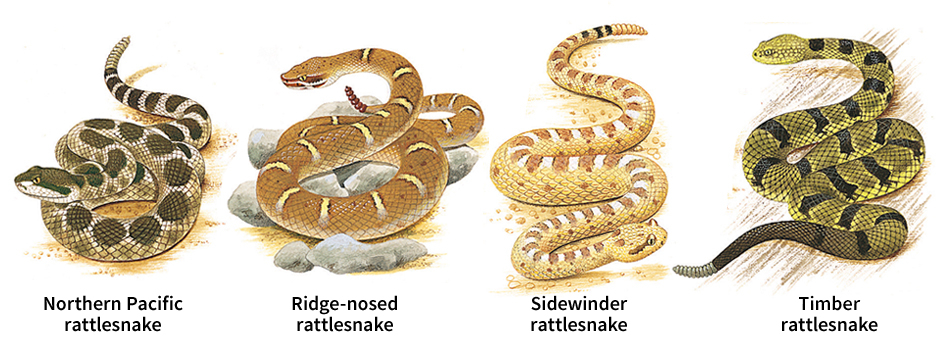Rattlesnake is any of a group of snakes with a rattle on the end of the tail. Rattlesnakes have a poisonous substance called venom. They use their venom to kill prey and defend themselves against enemies. They use their rattle to warn enemies to stay away. Sometimes the snakes give no warning sound with the rattle before they bite.
Scientists classify rattlesnakes among the pit vipers. There are about 30 species (kinds) of rattlers. All live in the Western Hemisphere from southern Canada to Argentina. Many inhabit the dry region of the southwestern United States and northern Mexico. These include the horned rattlesnake, or sidewinder, and the ridge-nosed rattlesnake. The eastern diamondback rattlesnake, pygmy rattlesnake, and timber rattlesnake inhabit the eastern United States. The northern Pacific rattlesnake lives from southwestern Canada to southern California. One species, the neotropical rattlesnake, occurs from southwestern Mexico to Argentina.
People can easily recognize a rattlesnake by its rattle. The rattle is a set of horny pieces loosely joined together. It makes a buzzing sound when shaken. Certain harmless snakes, often mistaken for rattlers, can make a sound by vibrating their tails in dry grass or leaves. But a careful observer can quickly tell whether a snake is a real rattler. The rattlesnake always lifts the end of its tail when it sounds. The harmless snake vibrates its tail back and forth on top of dry leaves or grass.



Females of many rattlesnake species can have young by about 3 years of age. The young usually are born in late summer. All rattlesnakes bear live young instead of laying eggs. Newborn rattlers can take full care of themselves and give painful and dangerous bites.
The oldest rattlesnakes, mostly those in captivity, may live up to 30 years. Each year, two to four new segments grow on the rattle. A new segment grows every time the snake sheds its skin. The segments resemble hollow cones. Each one partly fits over the one behind it. Segments often break off during the snake’s life. People can use the number of segments to determine the age of a young rattler. But the snake must retain the original button, or end segment, on its rattle. The existence of a button indicates that no segments have yet broken off.

Larger rattlers are among the most dangerous snakes. They should be avoided. They do not always rattle before biting. When an angry rattler strikes, its fangs are erected and the mouth is opened wide. The fangs fold back in the mouth when not in use. A rattlesnake can bite and release venom even hours after its head is cut off.
